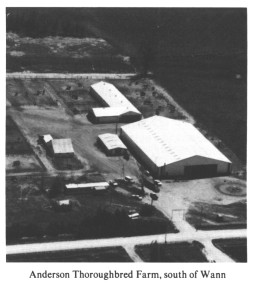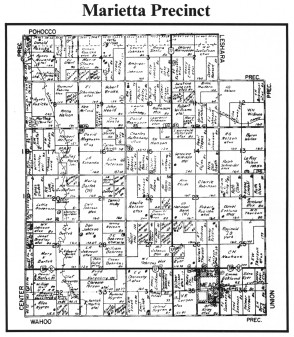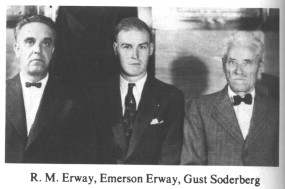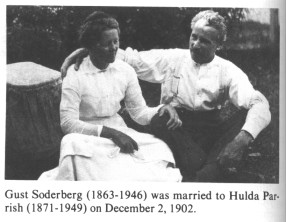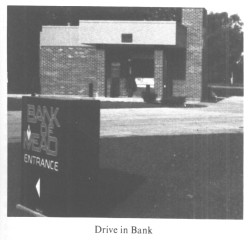 |
MARBLE PRECINCT |
|
When he became aware that homesteads were available in Nebraska, he came to Omaha where he drew a number and received a surveyor's plat. The plat indicated his homestead to be west of the Platte River and north of Saline Ford. In Omaha he purchased a team of horses, harness and wagon; also a breaking plow, stove, lantern and various tools. From Omaha he drove to Saline Ford, which the following year in 1870 was founded, and renamed Ashland. There was no bridge across Salt Creek so that stream had to be forded. In Saline Ford he purchased such edibles as salt pork, pemmican, dried beans, rice and salt. Canned foods were not yet available. From Saline Ford he drove almost straight north until he reached the shanty of a Mr. Marble Richardson, the only squatter between Saline Ford and Fremont. Richardson's place was the temporary post office and was known as Headland. It was located where, in later years, School District Number Eight was established. Marble Precinct was named after Marble Richardson According to Father's plat, his homestead had to be straight west of Headland where he found a red cobblestone that marked the southwest corner of his homestead. He was elated to find a small spring of running water on his claim, which induced him to dig a dugout in a sidehill close by. That dugout served as his home for seven years and also the temporary shelter for many newcomers that soon poured into that area, including his boyhood friend, Hans Storm, who shared the dugout with him for an entire year while Mr. Storm built a small house and broke up some of the sod on his own claim, just one mile north of father's place. John Kolb and Hans Storm remained close friends throughout their lives. After their retirement, they lived across the street from one another in Yutan and I, the writer, occasionally listened to their reminiscing about their good times when they were boys in their homeland. They went fishing together and in the winter, skating on the Eider River near their homes. Skating, not with steel skates like we have now but with wooden shoes or shoes with wooden soles and leather uppers. The early years of the 1870's in Nebraska were fruitful years and the newly-broken sod produced abundantly such crops as wheat, corn, rye and barley. The problem was getting it to market, which was either Fremont or Ashland. Fremont was the preferred market place but that was twenty miles from home or a round trip of forty miles. In winter, hauling a load of wheat to Fremont meant a long and cold drive. Sometimes darkness overtook him on the way back home, and with no fences and roads, it was easy to get lost. Then the only thing to do was to let the horses find the way, which they always did. To keep warm on those long cold trips, he would heat a peck or more of shelled corn in the oven, pour it in a bag and that served to keep the feet warm. A bag of hot corn also kept the lap and hands warm. No bridge over the Platte River at Fremont, so crossings had to be made by ferry boat. Raising hogs proved to be a profitable venture but in order to sell his hogs, father had to butcher, clean and dress the hogs at home, then haul the pork to Fremont where the fresh meat found a ready market. This, of course, could only be done in the winter months since he had no refrigeration. All went well for a few years until one day when tragedy struck. He had driven to Ashland with some wheat to be milled into flour and when he returned home he found a prairie fire had swept over his place, consuming everything in its path. A small granary with some grain in it was still smoldering when he reached home. A straw hog shed was burned and the hogs in it killed. But worst of all his barn was gone. His prized team of young mules he had recently purchased were burned to death. The sight of his dead mules brought tears to his eyes. Only his two cows had avoided the flames. The fire had started at the place of a man named Black which was just a mile south of father's place. How the fire started was never learned. Fuel was another problem in the early days. A diligent search over a large area of prairie still yielded a few sacks full of very hard dried buffalo chips which proved to be an excellent fuel. But for a quick hot fire small bundles of prairie hay were often used. The only wood available was on the islands of the Platte and that was difficult to get to shore. The fuel shortage induced John Kolb to plant a large grove of trees on his claim. He also set out two orchards of fruit trees that in later years provided his growing family with an abundance of fruits. In the year 1875 he built his first frame house, consisting of four rooms and a pantry and also another barn and other needed buildings. All the lumber and rocks for foundations were hauled from Ashland, a distance of sixteen miles. That was time consuming and hard work. In the late seventies came the dry years and grasshoppers. The swarms of hoppers or so called Locusts almost obscured the sun and devoured everything green, even stripping the young trees. Those were discouraging years that tried the stamina of the homesteaders and many of the less steadfast pioneers called it quits; sold their claims and vanished. Only the more hardy, courageous Swedes, Germans and Irish remained to build up the eastern part of Saunders County. In the early 1880's the rains came again and the country flourished. This brought in a new wave of immigrants and soon Saunders County became well populated. Submitted by Wm. O. Kolb
|
|
Emerson E. Erway succeeded his father in the mid 50's with banking experience from 1922. Emerson's wife, Ella, worked in the bank from 1934 to 1964. Leon Langemeier purchased the bank in 1964 and hired Kenneth Schuette to be manager followed by Les Nieuwenhuis. In 1971, the bank was robbed again. Employees, including a present employee, Alice Erickson, were tied on the floor and one customer was pistol-whipped as he entered the bank. The robbers were later caught and sent to prison. In 1979, William Foxley acquired the bank and hired Mrs. Sandy Reed as manager. A new 'Drive-up' facility was opened on Highway in November, 1982. The bank now has 6 full-time employees and one part-time employee.
THE IMMIGRATION OF THE |
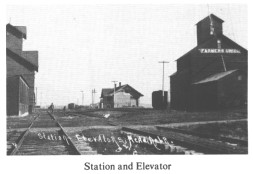 |
| Station and Elevator |
MEAD FIRE DEPARTMENT
The Mead Fire Department of today is recognized as one of the best equipped, capable, departments its size in the state of Nebraska. Vehicles included are two tankers, a pumper, four-wheel drive pickup, a 65-foot aerial platform, and two rescue units, all radio-equipped, in addition to other fine equipment.
The first fire fighting capability came into being in 1914 when a 35,000 gallon water tower and hydrant system was installed in Mead. To transport fire hose, a two-wheeled cart and box was purchased and equipped with hose and nozzles. This hose cart was pulled by men or towed by car to the scene of a fire, and was manned by citizens of Mead as there was no organized fire department then.
On July 9, 1928, concerned citizens met in the Almen Garage and organized the Mead Volunteer Fire Department. Fifteen members were present,
page 85
| Back | Contents | Next |
The Saunders County NEGenWeb Project
